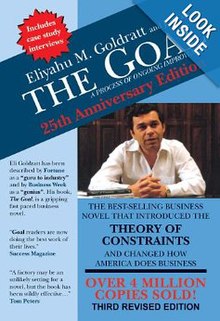The_Goal
The Goal (novel)
1984 book by Eliyahu M. Goldratt
The Goal is a management-oriented novel by Eliyahu M. Goldratt, a business consultant known for his theory of constraints, and Jeff Cox, the author of several management-oriented novels.[1] The Goal was originally published in 1984 and has since been revised and republished.[2] This describes a case study in operations management, focusing on the theory of constraints, and bottlenecks and how to alleviate them. In 2011, Time Magazine listed the book as one of "the 25 most influential business management books".[3]
This article has multiple issues. Please help improve it or discuss these issues on the talk page. (Learn how and when to remove these template messages)
|
